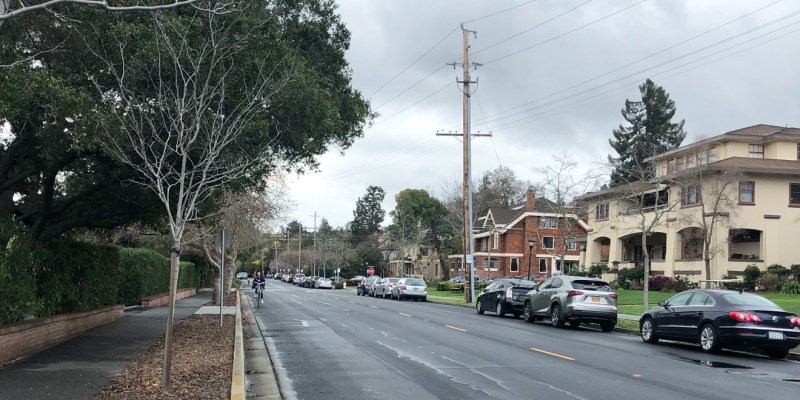Two years ago, noise from parties on the Row would wake up political science professor Clayton Nall’s infant child at 2 or 3 a.m. Despite Nall’s short commute, says his wife Marina Gruver, “We hate it here.”
Though parties have since gotten quieter, Gruver said, she remains dissatisfied with the situation.
“[The noise] has been a little bit less this year, but historically over the past five or six years the parties across the street have been extremely disruptive past the posted hours [of the parties’ official registration with the University],” she said.
Gruver, Nall and their two young children, who live near the Phi Kappa Psi fraternity house, aren’t alone in their complaints. Over the years, many professors who live near Mayfield Avenue have felt that campus police fail to consistently enforce noise guidelines from too-loud Row houses. Students and Residential Education (ResEd) say they are doing their best to minimize conflict, but the process of dealing with noise complaints is complicated by contradictions between Santa Clara County and University noise policies.
The Stanford Office of Special Events and Protocol states that maximum permissible sound levels must conform to those listed in the Santa Clara County Code. That code says “one- and two-family residential” areas should not receive sound greater than 45 decibels — about as loud as a refrigerator humming — from 10 p.m. to 7 a.m. Professor residences on Mayfield Avenue count within this category, defined as “any real property in any zoning district where one- and two-family dwellings are a permitted use.”
At the same time, “quiet hours” within student residences do not begin until 11 p.m. on weekdays and 1 a.m. on the weekends, and parties — which students groups and Row houses are required to register with the University and to conclude by the registered time — often are not scheduled to end until 1 a.m. Fridays and Saturdays on Mayfield Avenue are still filled with the sound of parties, pre-games and chattering students that far exceed the 45 decibel mark.
“Both the ordinance and the [Stanford] policy exist sort of simultaneously,” said Nate Boswell, associate dean of Residential Education. “Generally what happens is the noise ordinance is enforced when people complain.”
Boswell noted that the 45 decibel limit from the county code may be unrealistic on a college campus.
“We always want to be considerate,” he said, but administrators try to “acknowledge the realities of campus life” when setting and enforcing noise guidelines for students.
In 2014, economics professor Caroline Hoxby allegedly attempted to cut the speaker cords at a Kappa Sigma party. Hoxby and her husband, English professor Blair Hoxby, confronted fraternity members about noise at their event. According to some accounts, they then tried to stop the music by snipping the speaker cord. The Santa Clara County District Attorney decided not to file charges due to conflicting accounts and the absence of serious injuries.
Hoxby did not return the Daily’s request for comment at the time.
Two years ago, a time Nall and Gruver describe as particularly raucous, Nall filed a public records request for all noise complaints on campus over the year 2016.
The records show that 370 total noise complaints were made on Stanford’s campus that year. The data also reveal that the Stanford sheriff rarely issues more than a warning related to noise issues on the Row. “There’s been very little enforcement” of noise guidelines, Gruver alleged.
Stanford University Department of Public Safety spokesperson Bill Larson told The Daily that, when applicable and more appropriate, university police refer to university policy when responding to student-related noise complaints, rather than the ordinance which is more commonly enforced in municipalities. The Santa Clara County Counsel, which is responsible for the prosecution of ordinance violations, also prefers that the university attempt to resolve noise complaints on campus through policy limits, rather than a violation of the ordinance which is adjudicated through the legal system.
“We take a diplomatic approach,” Larson said. Officers usually begin by asking student to lower the volume, which Larson says most willingly do.
Perhaps as a result, some Mayfield Avenue residents report no noise issues.
Education professor Ray McDermott, who lived in New York City before moving to Palo Alto, said his new home was “like a sleepy town” in comparison.
Retired history professor Paul Robinson, who lives a block away from the Row, agreed with McDermott, noting that he occasionally hears faint noise, but nothing that keeps him awake. Robinson also said Row houses distribute paper notices to alert residents about upcoming parties.
Professors residing farther up the Row and away from the center of campus cited fewer complaints.
“Generally, I have few issues with the [noise] policy and we’ve had few incidents in the time I’ve been in charge,” said Conrad Milhaus ’20, who has been president of Kappa Sigma since the start of this quarter.
If his fraternity does get a noise complaint, Milhaus said, they “generally tell our DJs to just reduce the volume. If we receive a second complaint, which has only occurred once, we simply cut the outdoor music and move it to the indoor lounge.”
Boswell suggested that students’ willingness to compromise between hosting parties and placating neighbors has increased over recent years.
“I think that students are more responsive to neighbors and considerate of neighbors than they were a few years ago,” Boswell said.
This article has been updated to more accurately reflect Bill Larson’s explanation of how university police respond to noise complaints.
Contact Jasmine Kerber at jkerber ‘at’ stanford.edu.
